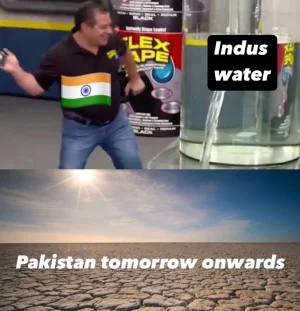- Joined
- Jun 27, 2024
- Messages
- 1,841
- Likes
- 11,535
Let them build infra on war basis and actually starve Pak of water and Awam will appreciate.Indian Awaam is amazing.
Till Indus Water Treaty is not touched, why is it not touched
When it is touched , Meh ..no big deal ..its nothing
Till then it's another jumla like CAA, NRC i.e promise big and then don't deliver and move on.

